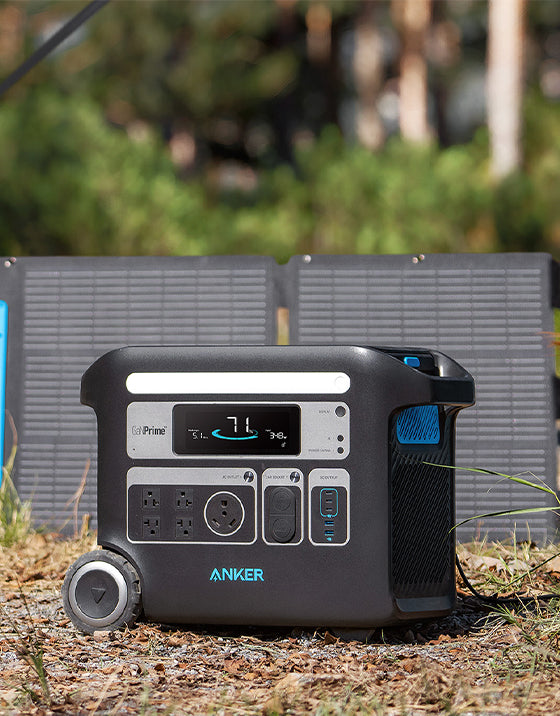From camp trips to storm season, here’s what’s worked for us.
We bought our first solar setup to keep the fridge running on overlanding trips. What started as a practical camping hack turned into one of the smartest prepping moves we’ve made.
Because here’s the truth: when the power goes out at home or you’re boondocking miles from anywhere, solar gives you independence. No fuel runs. No noise. Just quiet, reliable energy.
And if you’ve got a family? That kind of calm matters.
Turns out, the gear we use for fun is the same gear that keeps us read


Our Journey With Portable Solar
We started with the Goal Zero Yeti 1000—back when that was the gold standard. It’s still kicking, by the way. We paired it with our SnoMaster 60L dual-compartment fridge/freezer and could squeeze out a solid three days on battery alone.
On longer trips, we got strategic:
- Ran the fridge off the car adapter while driving
- Charged the Goal Zero from the vehicle alternator
- Topped it off with a semi-flexible 100W Renogy solar panel
- Later added two 45W panels to the roof rack to solar charge while driving
That setup worked so well, we almost forgot we were “off-grid.” As long as we drove every few days, we had power.
What We Use Now: Anker SOLIX F2000
Now that we’ve upgraded our rig—converted a wildland fire crew carrier into a family RV—we’ve also upgraded our solar. We swapped the old setup for the Anker SOLIX F2000, and it’s become the backbone of our power system, both on the road and at home.
It runs:
- The SnoMaster 60L fridge/freezer
- Lights, fans, tablets, and phones
- Even the drill battery chargers if we need to do repairs on the go
We’ve paired it with two 100W BougeRV CIGS panels on the roof—super light and durable. No fiddling with unfolding panels every morning.
And this isn’t just road gear. When our house refrigerator died recently, the SnoMaster stepped in as the backup. Since it can plug directly into a standard 120V wall outlet, we didn’t even need to run it off the solar generator. It bought us days of breathing room while we waited for the replacement fridge to arrive—no panicked cooler scrambles or takeout bills.
That’s what I love about having gear that does double duty. It’s not “just for camping”—it’s peace of mind with a plug.
Overlanding or Emergency: Same Setup, Different Mindset
That same solar setup comes in clutch when:
- The power goes out from windstorms or winter weather (hello, Pacific Northwest)
- We need to keep food cold, charge devices, or run tools during an extended outage
- Something unexpected hits—like a heatwave, wildfire smoke event, or delayed utility repair
We live in a suburban area, not out in the sticks. But even here, power can be unpredictable. Solar isn’t just a camping luxury—it’s a quiet backup plan that works without gas, noise, or hassle.
Other Gear We’ve Used and Recommend
- Goal Zero Yeti 1000 – no longer made, but solid if you find one used
- Goal Zero Yeti 1500X – upgraded model, often sold out
- BougeRV 100W CIGS Solar panels
- SnoMaster 60L Dual Zone Fridge/Freezer – efficient and rugged
Final Takeaways from a Mom Who Packs Snacks and Solar
If you’re starting out, don’t worry about building a perfect system from day one. Use what you have. Charge as you drive. Add panels as you go.
But if you want a rock-solid, ready-for-anything setup that works for overlanding and emergencies? Here’s what’s working for us:
- Anker SOLIX F2000
- BougeRV 100W CIGS Solar Panels
- A fridge you can trust (shoutout to SnoMaster but Dometic also makes a great one)
- And a flexible mindset
Because preparedness doesn’t have to be a bunker—it can be a road trip with a plan.
If you’re looking to make the rest of your camp setup as dependable as your power setup, don’t miss our 10 Must-Have Overlanding Gadgets That Make Trips Better.
FTC Disclosure: This post contains affiliate links. If you use these links to buy something, Castle Preps may earn a commission at no additional cost to you. Thank you!


Leave a Reply